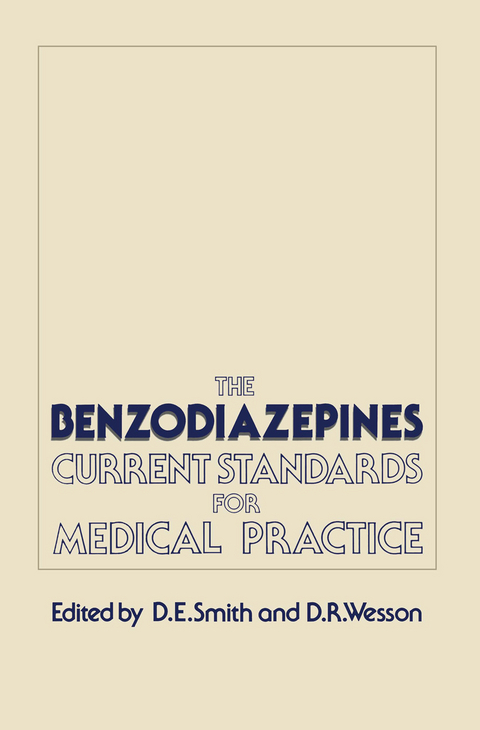
The Benzodiazepines: Current Standards for Medical Practice
Springer (Verlag)
978-94-010-8663-9 (ISBN)
Used for treatment of anxiety. insomnia. muscle spasticity, convulsive disorders, anesthesia adjuncts and alcohol detoxification. the benzodiazepines have significant advantages over their predecessor medi- cations: the short-acting barbiturates, meprobamate and methaqualone. Of significance is their high lethal/therapeutic ratio. of importance in cases of overdose; their failure to activate liver microsomal enzymes.
I Clinical Pharmacology.- 1 The biological basis of benzodiazepine actions.- 2 Clinical pharmacokinetics of the benzodiazepines.- 3 Pharmacokinetic considerations in the treatment of chronic anxiety.- II Therapeutic Application.- 4 An international overview.- 5 Principles of therapeutic applications of benzodiazepines.- 6 Benzodiazepines in emotional disorders.- 7 Anxiety.- 8 Clinical comparison of benzodiazepine hypnotics with short and long elimination half-lives.- 9 Seizure disorders.- 10 Alcohol and other drug withdrawals.- 11 Additional clinical uses of benzodiazepines.- 12 Vital uses of diazepam in third world countries.- III Non-medical Use, Misuse and Abuse.- 13 Abuse and dependency: an international perspective.- 14 Experimental abuse liability assessment of benzodiazepines.- 15 Abuse liability of benzodiazepines: A review of human studies evaluating subjective and/or reinforcing effects.- 16 Acute and chronic toxicity of benzodiazepines.- IV Dependence.- 17 Benzodiazepine dependency syndromes.- V Social-Cultural Issues.- 18 The benzodiazepines: public health, social and regulatory issues. An industry perspective.- 19 Benzodiazepines: international legislation and relation to the Convention on Psychotropic Substances 1971.- Appendices.- 1 Cross-reference of investigational, generic and trade names.- 2 Books on benzodiazepines.
| Zusatzinfo | 304 p. |
|---|---|
| Verlagsort | Dordrecht |
| Sprache | englisch |
| Maße | 155 x 235 mm |
| Themenwelt | Medizin / Pharmazie ► Medizinische Fachgebiete ► Pharmakologie / Pharmakotherapie |
| Medizin / Pharmazie ► Pharmazie | |
| ISBN-10 | 94-010-8663-X / 940108663X |
| ISBN-13 | 978-94-010-8663-9 / 9789401086639 |
| Zustand | Neuware |
| Haben Sie eine Frage zum Produkt? |
aus dem Bereich


